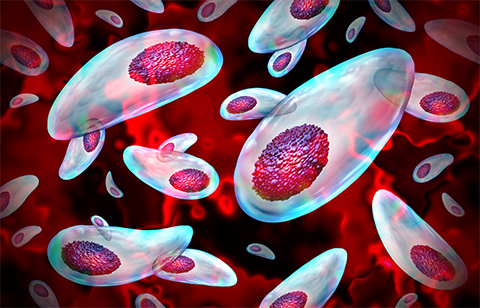Targeting Toxoplasma parasites and their protein accomplices
Toxoplasmosis is an infectious disease caused by the parasite Toxoplasma gondii and is transmitted via contaminated food or feces. The infection can cause a range of symptoms that may be mild or severe, resulting in blindness and brain infection. Current T. gondii therapeutics are not very effective, so scientists need to further investigate potential drug targets.

Sheena Dass and a team of researchers from the Université Grenoble Alpes, France, identified seven genes responsible for expressing enzymes of metabolic interest in these parasites. Their recent article in the Journal of Lipid Research characterizes one of these enzymes, T. gondii acyl-CoA synthetase 3, or TgACS3.
TgACS3 was found to be localized in the cytosol of the parasite and to upregulate its parasitic growth while increasing its chances of survival within its host. Gas chromatography-mass spectrometry was implemented to analyze the lipid content in the parasite, which revealed the role of TgAC3 in the uptake and utilization of its host fatty acids, generating the parasite phospholipid layer, and maintaining the growth of new parasites.
This study is an important step towards achieving targeted therapeutic mechanisms in the treatment of Toxoplasmosis, as researchers can leverage the findings shared in a more rigorous analysis.
Enjoy reading ASBMB Today?
Become a member to receive the print edition four times a year and the digital edition monthly.
Learn moreGet the latest from ASBMB Today
Enter your email address, and we’ll send you a weekly email with recent articles, interviews and more.
Latest in Science
Science highlights or most popular articles

Exploring the link between lipids and longevity
Meng Wang will present her work on metabolism and aging at the ASBMB Annual Meeting, March 7-10, just outside of Washington, D.C.

Defining a ‘crucial gatekeeper’ of lipid metabolism
George Carman receives the Herbert Tabor Research Award at the ASBMB Annual Meeting, March 7–10, just outside of Washington, D.C.

The science of staying strong
Muscles power every movement, but they also tell the story of aging itself. Scientists are uncovering how strength fades, why some species resist it and what lifestyle and molecular clues could help preserve muscle health for life.

Bacteriophage protein could make queso fresco safer
Researchers characterized the structure and function of PlyP100, a bacteriophage protein that shows promise as a food-safe antimicrobial for preventing Listeria monocytogenes growth in fresh cheeses.

Building the blueprint to block HIV
Wesley Sundquist will present his work on the HIV capsid and revolutionary drug, Lenacapavir, at the ASBMB Annual Meeting, March 7–10, in Maryland.

Gut microbes hijack cancer pathway in high-fat diets
Researchers at the Feinstein Institutes for Medical Research found that a high-fat diet increases ammonia-producing bacteria in the gut microbiome of mice, which in turn disrupts TGF-β signaling and promotes colorectal cancer.

